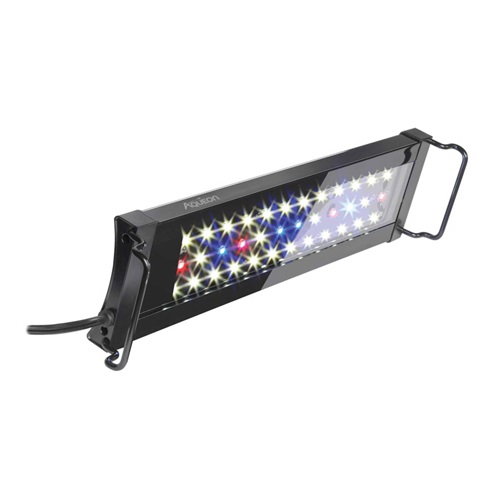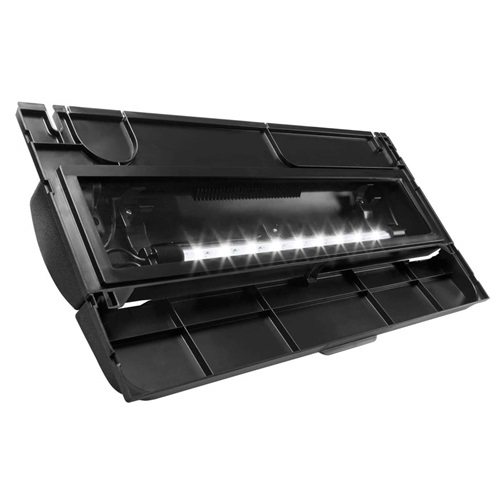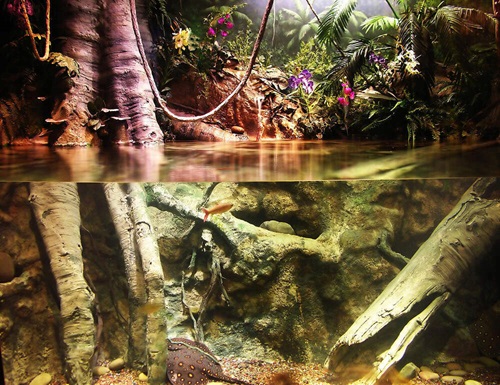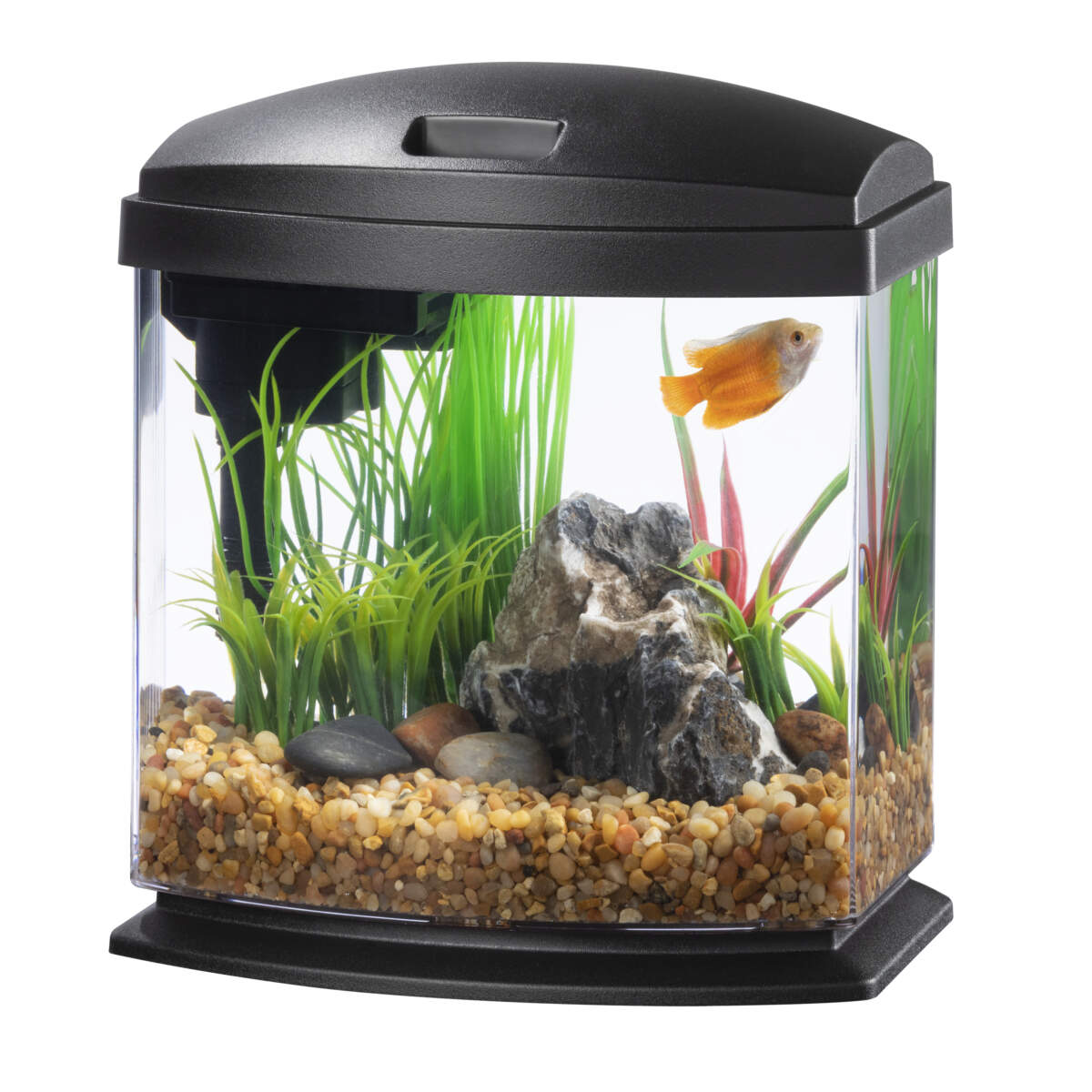Choosing the Right Aquarium Light
Choosing the right light is one of the most important aspects of an aquarium. It can also be one of the most confusing, especially for beginner aquarists. Choosing the best light fixture for your aquarium depends on the needs of the animals and plants you'll be keeping, the size and dimensions of your aquarium and your budget.
Fish and Plant Needs
The number 1 reason to have a light on your aquarium is to enjoy the beauty of the fish, plants and decorations. In addition, the fish need to see so they can get around, find food and interact with each other. But there are other considerations; fish and live plants have specific light needs. Some fish inhabit open water in rivers, streams and lakes, where the light is bright most of the day. Others prefer dimmer habitats among fallen logs or under overhanging vegetation. The same applies to plants; some grow in shallow or open water, where the light is bright and constant throughout the day. Others are found in deeper water or in the shadow of taller plants or overhanging shrubs and trees. It's important to choose a light that is appropriate for the types of fish and plants you keep.

Light Intensity And Spectrum
Not all light is created equal. Intensity refers to how strong or "bright" a light is. Spectrum is a way of describing the mixture of different colors – or wavelengths – a light produces. Light spectrum is often given a Kelvin rating or "K rating". Light sources that give off a yellowish or warm effect have a low Kelvin rating, while those that produce a crisp bluish-white or cool light have a high Kelvin rating. Most freshwater aquarium lights are rated between 5,500 and 8,000 Kelvin.
Intensity and spectrum are less important in aquariums or with artificial plants, although some lights enhance natural colors better than others. A light that's too intense may promote algae, especially in non-planted tanks. Where live plants are concerned, proper intensity and spectrum can make a difference between success and failure. Water depth is a factor, as well. Certain wavelengths, especially blue, penetrate deeper into water than others, and this can be critical to live plants. Let your local dealer know your tank's height and the types of plants you want to keep when getting advice on the best light fixture for your aquarium.

Type of Light Fixtures
There are several types of aquarium lights, allowing aquarists to choose one that best suits their needs and those of their aquarium inhabitants. Aqueon® and Coralife® offer a wide range of full hoods, strip lights and clip-on lights. Here are some common choices for freshwater aquariums:
Standard Fluorescent
For years this has been the most common form of aquarium lighting and it continues to be popular today. Affordable pricing and a selection of bulbs for different applications make fluorescent lights a great choice for many aquarists. Aqueon offers strip lights and full hoods as well as a selection of bulbs for rectangular, hexagon and bowfront aquariums. Bulbs dim over time and should be replaced every 10 to 12 months.

Aqueon Fluorescent Light Fixtures
LED
Rapidly becoming the most popular type of aquarium lighting, these energy-efficient lights offer features that aren't available in other aquarium lights. Aqueon LED lights are available for aquariums of almost any size. They use far less energy than other lights, do not heat the water and the LEDs last several years without losing intensity. OptiBright lights feature higher intensity, programmable timers, output (intensity) and spectrum controls, nighttime moonlights, adjustable sunrise/sunset and moonrise/moonset timers and different color options!

Aqueon Planted Aquarium Clip-On LED

Aqueon OptiBright MAX LED Light

Day/Night Cycle
It's important for all living things to have a regular day/night cycle for optimum health and well-being. In the tropics, where most aquarium fish, invertebrates and plants come from, there are 12 hours of light (known as the photoperiod) and 12 hours of darkness every day of the year. Planted aquariums do best with 12 hours of light, while those without live plants will have less algae with a photoperiod of approximately 8 to 10 hours. Use a timer on your aquarium light to create a consistent day/night cycle. To enjoy your aquarium during evening hours, place it away from windows and set the timer accordingly.

Algae And Light
A commonly held belief in aquarium keeping is that too much light causes excessive algae growth. Algae are nature's way of purifying water and are a natural part of any aquarium. The truth is that nuisance algae outbreaks are more often caused by nutrient build-up than lighting issues. Planted aquarium owners rarely need to clean algae even though they use high output lighting because nutrients are quickly utilized by the plants, thus starving any algae. The trick to preventing algae growth is to manage nutrients with regular water changes, chemical filter media and not overfeeding your fish, along with providing the right amount of light.
In aquariums, the term "nutrients" refers to nitrate and phosphate, which typically come from fish food and the resulting fish waste. But there is another source, which is tap water. Many tap water sources contain high levels of these impurities and performing water changes with nitrate or phosphate-laden water will not reduce levels and may even cause them to rise. If your tap water contains high nutrient levels, use reverse osmosis (RO) or deionized (DI) water with Aqueon® Water Renewal added to fill your aquarium and perform water changes.
Choosing the right light for your aquarium enhances its natural beauty and ensures the long-term health of your fish, plants and invertebrate life!
Please join our newsletter, connect with us on Facebook or contact us for more information.





